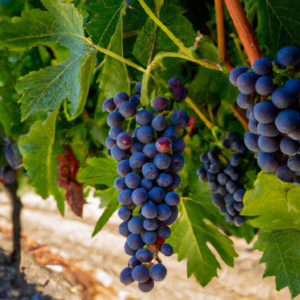Terroir is a French term that explains how the environment affects the taste and quality of wine. This includes things like the climate, soil type, and topography, and is an important factor in winemaking and wine enjoyment.
The concept of terroir is based on the idea that wines from different regions have distinct and recognizable flavors and aromas that are unique to that area. This is due to the combination of environmental factors that influence the grapes as they grow and the winemaking techniques used in the region. The concept of terroir is also influenced by the grape variety used to make the wine, as different grapes have different flavor profiles and respond differently to the environmental factors in a given region. One of the key factors that influence terroir is climate. The temperature, rainfall, and sunlight in a given area can all have a significant impact on the grapes and the finished wine. For example, cooler climates tend

to produce wines that are higher in acidity and lower in alcohol, while warmer climates tend to produce wines that are more full-bodied and higher in alcohol. Soil type is another important factor that can influence terroir. Different soil types can have different mineral compositions, which can affect the flavor and aroma of the grapes. For example, soils with high levels of limestone can produce wines with high acidity and minerality, while soils with high levels of clay can produce wines that are more full-bodied and tannic. Topography, or the physical features of the landscape, can also influence terroir. For example, grapes grown on a steep slope may have different characteristics than those grown on a flat plain. This is because the slope can affect the amount of sunlight and water that the grapes receive, which can impact their flavor and aroma. Malolactic fermentation is a process that can also impact terroir. This process involves converting malic acid, which is a naturally occurring acid in grapes, into lactic acid, which is a milder acid. This process can soften the acidity in a wine and give it a creamier mouthfeel. However, it can also change the flavor profile of the wine, making it more buttery or creamy. In conclusion, terroir is a critical concept in winemaking that describes the unique combination of environmental factors that influence the characteristics of a wine. These factors can include climate, soil type, and topography, as well as the grape variety used and the winemaking techniques employed. Understanding terroir is essential for winemakers, as it can influence the taste, aroma, and overall quality of the finished wine. Malolactic fermentation is another factor that can impact terroir, as it can change the flavor profile of a wine and give it a creamier mouthfeel.
Lorem ipsum dolor sit amet, consectetur adipiscing elit. Ut elit tellus, luctus nec ullamcorper mattis, pulvinar dapibus leo.
Tags, Tags, #hashtags, Tags